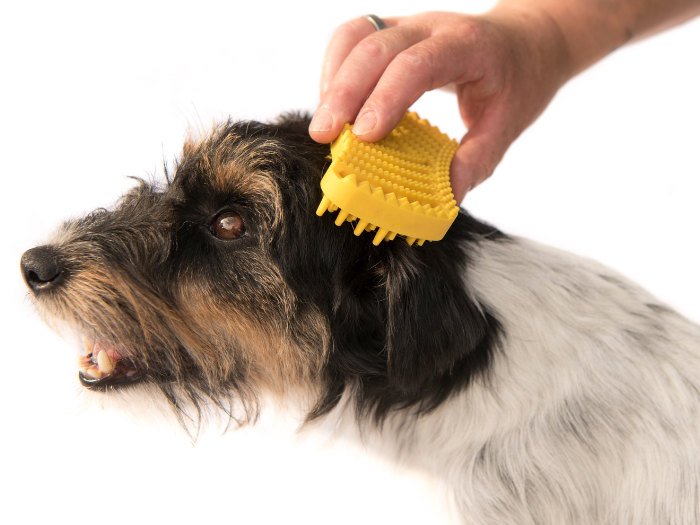
Understanding the Benefits of Regular Brushing
Brushing your dog’s coat is not just a grooming task; it plays a vital role in maintaining their overall health and well-being. Here are some key benefits of regular brushing:
- Removing Loose Hair: Brushing helps remove loose hair, preventing it from accumulating around your home and reducing the amount of shedding.
- Preventing Matting and Tangles: Regular brushing prevents mats and tangles from forming in your dog’s coat, which can be uncomfortable and even painful for them. It also reduces the risk of skin irritation and infections.
- Stimulating Blood Circulation: Brushing stimulates blood flow to the skin, promoting a healthy and shiny coat. It also encourages the distribution of natural oils, keeping the skin moisturized.
- Bonding and Trust Building: Brushing sessions provide an opportunity for you to bond with your dog. It allows for positive physical contact and helps build trust between you and your furry friend.
Choosing the Right Brush for Your Dog
Not all dogs have the same coat type, so it’s essential to use the right brush for your dog’s specific needs. Here are some common types of brushes and their suitable applications:
- Bristle Brushes: Ideal for dogs with short, smooth coats. They help distribute natural oils and remove loose hair.
- Slicker Brushes: Suitable for dogs with medium to long coats. They effectively remove tangles, mats, and loose hair.
- Undercoat Rakes: Designed for dogs with thick double coats, such as Huskies or Golden Retrievers. They help remove dead undercoat and prevent shedding.
- Wire Pin Brushes: Suitable for dogs with long or curly coats. They gently remove tangles and prevent matting.
Remember to choose a brush with appropriate bristle or pin length and spacing, depending on your dog’s coat density and length.
The Proper Technique for Brushing Your Dog’s Coat
To ensure a comfortable and effective brushing experience, follow these steps:
- Prepare Your Dog: Start by getting your dog used to the brushing process. Offer treats and positive reinforcement to create a positive association with brushing.
- Choose the Right Environment: Find a quiet and comfortable space where you and your dog can focus on the grooming session without distractions.
- Gentle Approach: Begin brushing with gentle strokes, following the direction of hair growth. Avoid pulling or tugging, as it can cause discomfort and skin irritation.
- Pay Attention to Sensitive Areas: Be extra cautious when brushing sensitive areas such as the belly, tail, and ears. Use a lighter touch and be mindful of any signs of discomfort from your dog.
- Remove Tangles and Mats: If you encounter tangles or mats, use your fingers or a specialized detangling tool to gently loosen them before proceeding with the brush.
- Regularity is Key: Establish a regular brushing routine based on your dog’s coat type. Some dogs may require daily brushing, while others may only need it once or twice a week.
- Monitor for Skin Issues: While brushing, keep an eye out for any signs of skin irritation, redness, or abnormalities. If you notice anything concerning, consult your veterinarian.
Professional Grooming and Maintenance
While regular at-home brushing is essential, professional grooming is also beneficial for your dog’s coat health. Consider the following:
- Professional Grooming Services: Professional groomers have the expertise and tools to handle various coat types and provide specialized grooming services such as trimming, shaping, and deshedding.
- Coat Maintenance Between Grooming Sessions: Even if you take your dog to a professional groomer, regular at-home brushing is still necessary to maintain their coat between appointments.
- Additional Grooming Needs: Some breeds may require specific grooming techniques, such as hand-stripping or carding, to maintain their coat’s texture and appearance. Consult a professional groomer for breed-specific grooming advice.
Frequently Asked Questions about Brushing Your Dog’s Coat
Conclusion
In conclusion, regular brushing is essential for maintaining your dog’s coat health, preventing matting and tangles, and promoting bonding between you and your furry friend. By using the right brushes, following proper techniques, and incorporating professional grooming as needed, you can ensure that your dog’s coat remains healthy, shiny, and free from discomfort.
